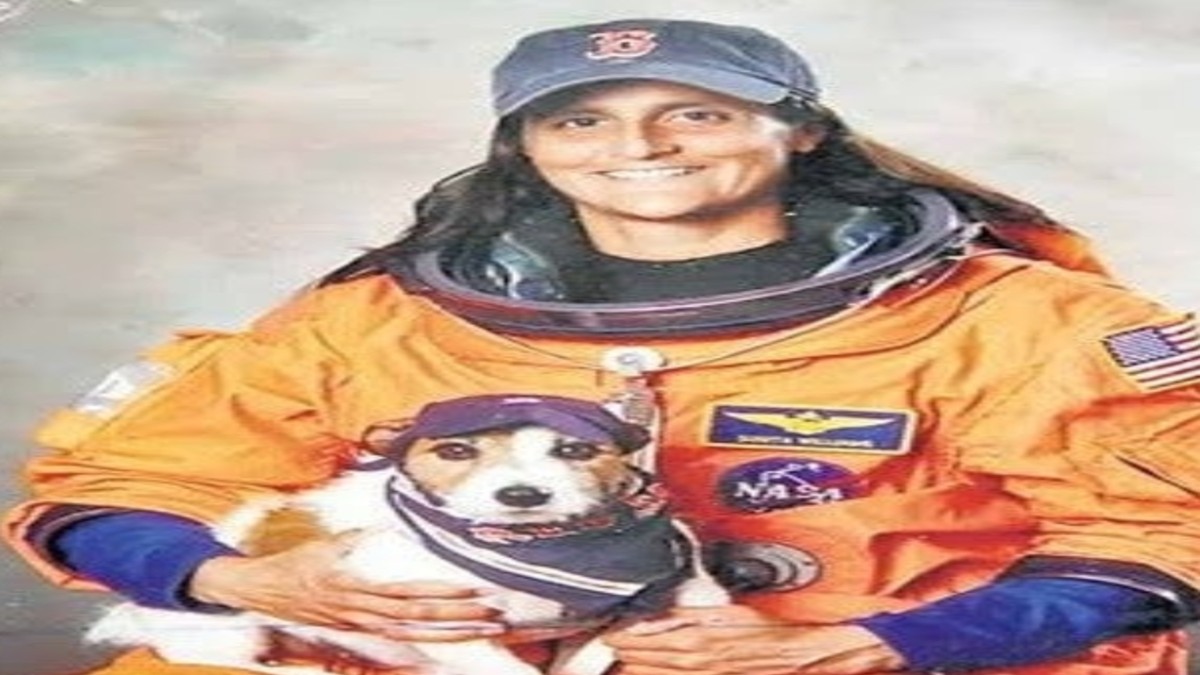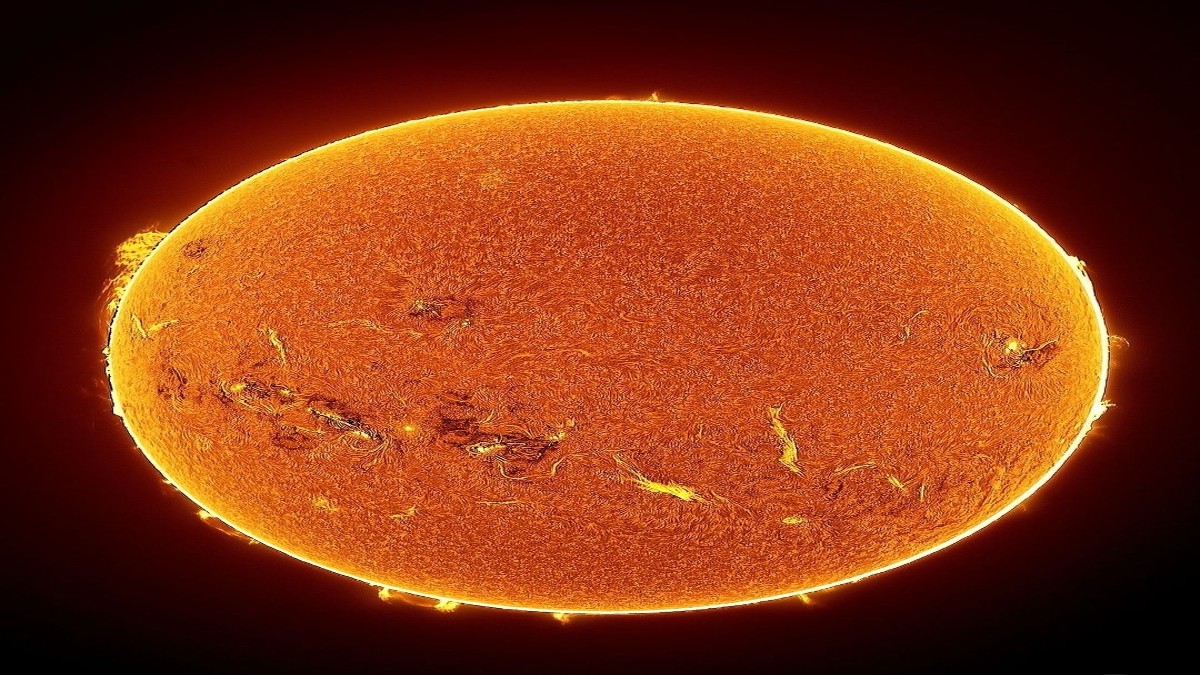
Sunita Williams
Sunita Lyn Williams is one of NASA’s most prominent astronauts, known not only for her extensive contributions to space exploration but also for her inspiring journey as a pioneer for women in science and technology. Over the course of her career, she has set numerous records and broken significant barriers, earning a place among the most accomplished astronauts in history.
Born on September 19, 1965, in Euclid, Ohio, to an Indian-American father and a Slovenian-American mother, Sunita’s multicultural background and diverse experiences have shaped her into a trailblazer in the realm of space exploration.
Williams’ story is one of resilience, determination, and dedication to space science. Her accomplishments have inspired countless young girls and boys across the globe to dream beyond the stars.
As a two-time spaceflight veteran, Sunita has spent more than 322 days in space, ranking her among the most experienced spacefarers of all time. In this article, we will explore her life, her illustrious career at NASA, her missions aboard the International Space Station (ISS), her records and achievements, and her role as a symbol of perseverance and exploration in the 21st century.
Early Life and Education
Sunita Williams was born in Ohio but was raised in Needham, Massachusetts, alongside her siblings. Her father, Dr. Deepak Pandya, an Indian immigrant, worked as a neuroanatomist, while her mother, Bonnie Pandya, hailed from Slovenia. From an early age, Sunita showed a curiosity for science and a passion for outdoor activities. However, becoming an astronaut was not always part of her plan.
Her path to NASA was unconventional. After graduating from Needham High School in 1983, Sunita attended the United States Naval Academy, where she earned a Bachelor of Science degree in physical science in 1987. During her time at the Naval Academy, she developed a keen interest in aviation, which led her to pursue a career in the United States Navy. Her initial goal was to become a pilot, but the idea of space exploration did not emerge until later in her military career.
After completing her undergraduate education, Sunita was commissioned as an ensign in the U.S. Navy. She later earned a Master of Science degree in engineering management from Florida Institute of Technology in 1995. Williams’ time in the Navy allowed her to hone the skills and discipline that would eventually propel her into the astronaut corps. As a naval officer, she served as a helicopter pilot, logging over 3,000 flight hours in more than 30 different aircraft. Her experience in the Navy helped her build the leadership and technical skills required for a career in space exploration.
Becoming a NASA Astronaut
Sunita Williams’ transition from the Navy to NASA was marked by determination and perseverance. She applied to NASA’s astronaut program and was selected as an astronaut candidate in 1998. She underwent rigorous training that involved survival training, spacewalk simulation, and mastery of various scientific instruments. Her training at NASA was a test of her endurance and resilience, as she prepared to become one of the few women in space.
The selection process for NASA’s astronaut program is highly competitive, and Sunita’s military experience, leadership skills, and academic background made her an ideal candidate. She excelled during her training and quickly became a standout astronaut. Her journey to space, however, would take time, as she needed to wait for her first mission assignment.
First Mission: Expedition 14/15
Sunita Williams’ first space mission came in December 2006 when she was launched aboard the Space Shuttle Discovery for Expedition 14/15 to the International Space Station (ISS). Her six-month stay aboard the ISS marked the beginning of an illustrious space career. During this mission, she set a then-record for the longest spaceflight by a woman, spending 195 days in space.
One of the most memorable aspects of her first mission was her participation in four spacewalks (or extravehicular activities – EVAs), which amounted to over 29 hours of work outside the spacecraft. These spacewalks were critical to maintaining and upgrading the ISS, including tasks such as rewiring the station’s electrical systems. Williams’ contributions to these technical operations showcased her skill, bravery, and determination in the challenging environment of space.
A significant personal milestone for Sunita occurred during this mission when she participated in the Boston Marathon while aboard the ISS. Using a treadmill on the space station, she became the first person to run a marathon in space. This remarkable achievement underscored her dedication not only to her work as an astronaut but also to her physical fitness.
Second Mission: Expedition 32/33
In July 2012, Williams returned to space as part of Expedition 32/33, this time serving as the Commander of the ISS. This mission further solidified her reputation as one of NASA’s most accomplished astronauts. As commander, she was responsible for overseeing the daily operations and experiments aboard the space station, as well as managing her multinational crew. Under her leadership, the crew conducted numerous scientific experiments, focused primarily on life sciences, materials research, and technological advancements that could improve long-duration space travel.
During Expedition 32/33, Sunita Williams made three more spacewalks, bringing her total EVA time to 50 hours and 40 minutes. At the time, she held the record for the most spacewalks by a female astronaut, showcasing her expertise in performing complex tasks in the harsh environment of space. These spacewalks were essential to the continued operation and development of the ISS.
Records and Achievements
Throughout her career, Sunita Williams has set and broken several records in space exploration, particularly for women astronauts. Some of her most notable achievements include:
- Most spacewalks by a female astronaut: Sunita conducted seven spacewalks, totaling 50 hours and 40 minutes of extravehicular activity.
- Longest single spaceflight by a woman: Her 195-day stay aboard the ISS during Expedition 14/15 set a record for the longest duration in space by a woman (a record later surpassed by other astronauts).
- First marathon in space: As an avid runner, Sunita completed the Boston Marathon while in orbit aboard the ISS.
- Commander of the ISS: Sunita became one of the few women to command the International Space Station during her second mission, Expedition 32/33.
Her achievements are not only a testament to her individual skill and endurance but also symbolize the growing role of women in space exploration and STEM fields. Sunita has consistently served as a role model for young women and girls interested in pursuing careers in science, engineering, and space exploration.
Challenges and Resilience
While her accomplishments in space are widely celebrated, Sunita Williams’ career has also been marked by challenges. The rigorous physical and psychological demands of space travel require intense preparation and training. Astronauts are away from their families for extended periods, and the isolation of space missions can take a toll on mental health. Williams has spoken candidly about the emotional challenges of being away from her loved ones while in space, as well as the physical toll of living in a microgravity environment.
Sunita has also been vocal about the difficulties women face in male-dominated fields like aerospace and the military. Throughout her career, she has encountered biases and expectations that women often face in STEM fields. However, she has consistently broken through these barriers, proving that women can excel in the most challenging and technical domains.
Sunita Williams’ Legacy
Sunita Williams’ legacy extends far beyond her record-breaking achievements and time spent in space. She has been a steadfast advocate for space exploration, diversity in STEM, and the importance of international cooperation in science. As a NASA astronaut, she has represented the United States on missions that have furthered humanity’s understanding of space and paved the way for future space endeavors.
Her efforts to engage the public and inspire the next generation have also been noteworthy. Sunita has participated in numerous outreach programs, speaking at schools, universities, and conferences to encourage students—especially young women and minorities—to pursue careers in science, technology, engineering, and mathematics. She remains committed to breaking down the barriers that often prevent women and underrepresented groups from excelling in these fields.
In recognition of her contributions to space exploration and STEM advocacy, Sunita Williams has received numerous awards and honors, including the NASA Spaceflight Medal, the Navy Commendation Medal, and induction into the U.S. Astronaut Hall of Fame.
Future Prospects and Conclusion
As NASA shifts its focus towards deeper space exploration, including missions to the Moon and Mars, Sunita Williams continues to play an active role in shaping the future of space travel.
She has been selected as one of the astronauts for NASA’s Artemis program, which aims to return humans to the lunar surface by the mid-2020s. Williams’ extensive experience in space and her leadership skills make her a key figure in these upcoming missions, potentially paving the way for future spacefarers who will explore new frontiers.
In conclusion, Sunita Williams’ journey from a young naval officer to one of NASA’s most accomplished astronauts is a story of resilience, hard work, and a deep passion for exploration.
Her contributions to space science and her role as a pioneer for women in STEM continue to inspire individuals around the world. As humanity looks toward the next phase of space exploration, Williams’ legacy will undoubtedly remain a guiding light for future generations of explorers






